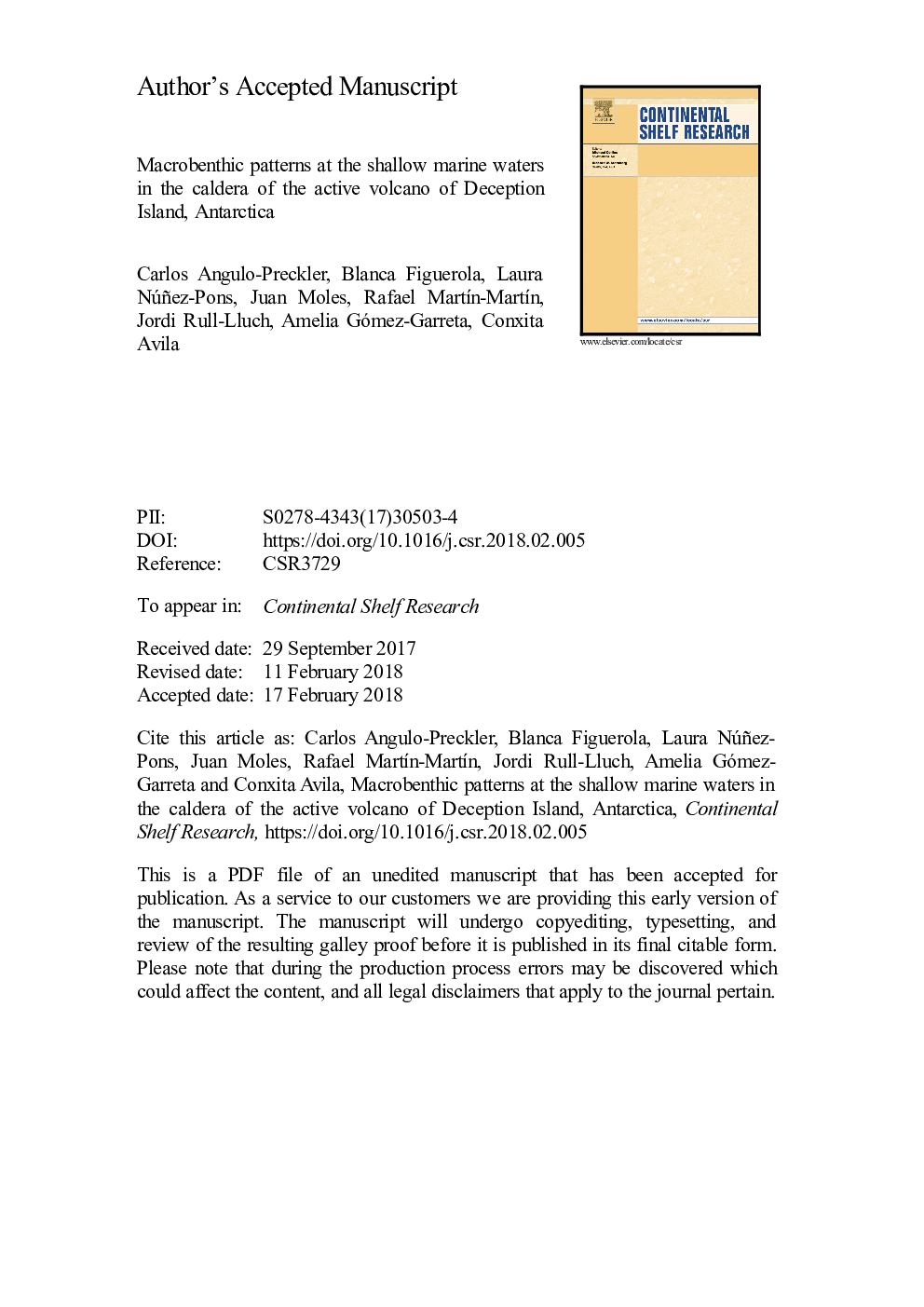| Article ID | Journal | Published Year | Pages | File Type |
|---|---|---|---|---|
| 8884067 | Continental Shelf Research | 2018 | 35 Pages |
Abstract
Deception Island is an active volcano located at the southern end of the South Shetland Archipelago, in the Antarctic Ocean. After the last eruption in 1970, benthic recolonization took place within the bay, with echinoderms being the dominant epifauna (e.g., the ophiuroid Ophionotus victoriae, the echinoid Sterechinus neumayeri and the sea star Odontaster validus), together with dense infaunal communities (mostly composed by oligochaetes, polychaetes, and bivalves). Here, we aim to describe the actual status of the marine benthic ecosystems inhabiting the shallow subtidal areas of this volcanic island. Benthic species were qualitatively scored as presence versus absence, considering the different sampling effort between localities done over the years. A total of 139 species of macroorganisms, belonging to 16 phyla were found, including fauna and flora, increasing the species richness values previously reported in all sites surveyed within the volcano caldera. Moreover, a dramatic increase in biodiversity was found towards the entrance of the bay. We suggest, however, that recolonization from external waters may not be the only reason for this pattern. In fact, sediment flux rates and substrate instability are common disturbances within the bay, probably being among the major factors determining benthic community assemblages. These processes probably favour deposit feeding communities at the innermost locations of the bay. This study provides a remarkably increased and updated species inventory from previous reports, altogether with a description of the main communities inhabiting the bay and the abiotic factors regulating this, mainly the bottom type.
Related Topics
Physical Sciences and Engineering
Earth and Planetary Sciences
Geology
Authors
Carlos Angulo-Preckler, Blanca Figuerola, Laura Núñez-Pons, Juan Moles, Rafael MartÃn-MartÃn, Jordi Rull-Lluch, Amelia Gómez-Garreta, Conxita Avila,
